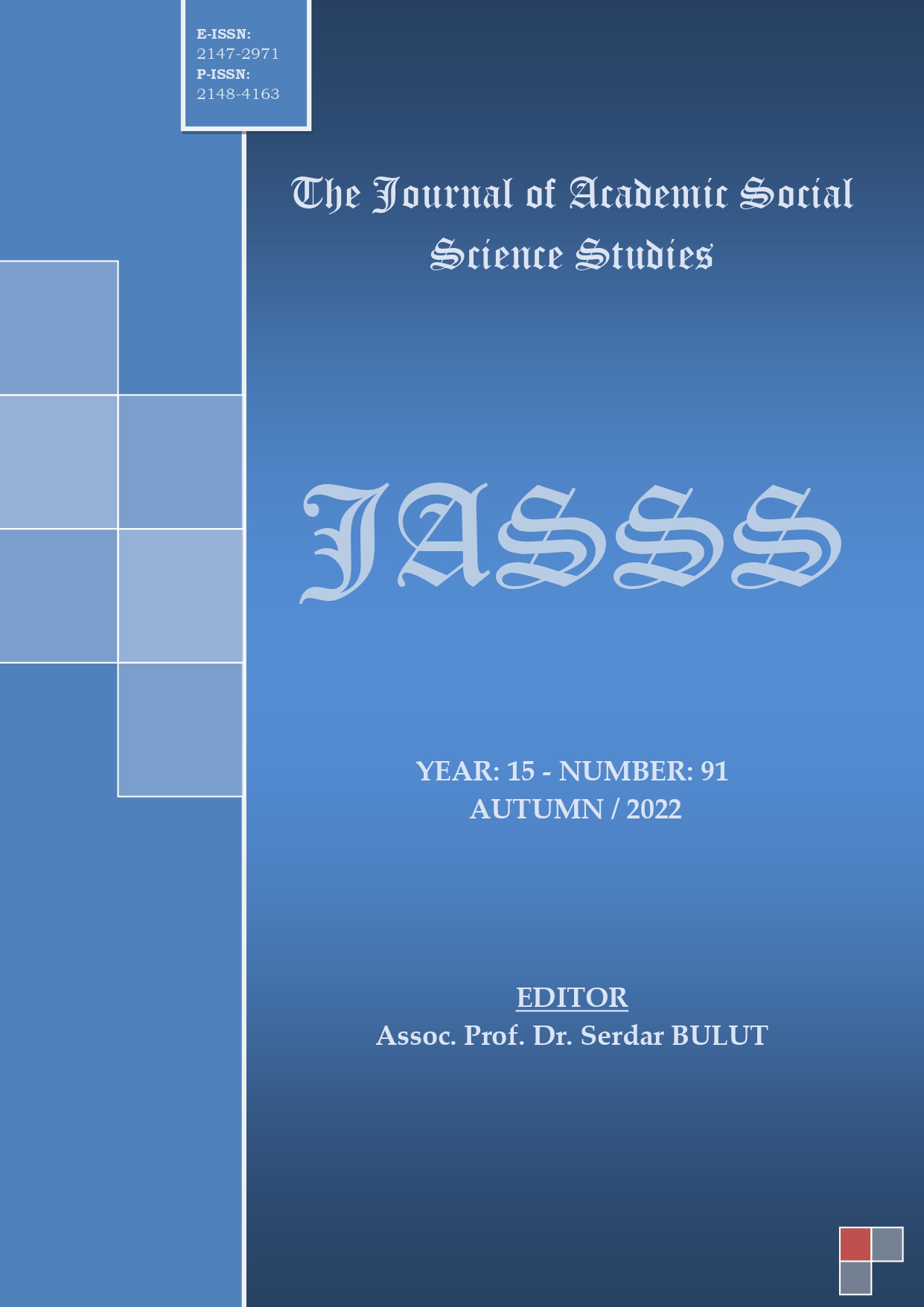Author :
Abstract
Mısır’ın Osmanlılar tarafından ele geçirilmesiyle birlikte Doğu Akdeniz bir Türk gölü haline getirirken, Kıbrıs’ın yabancı bir devletin kontrolünde olması Osmanlı Devleti’nin güvenlik ve bütünlüğü açısından zafiyet yaratmıştır. Ayrıca Venedikli korsanların Osmanlı gemilerini yağmalaması ve hac yolunu tehlikeye sokması da Kıbrıs’ın ele geçirilmesini gerektiren diğer hususlar arasındadır. Öte yandan Venediklilerin, Kıbrıs’ı bir yerleşim yerinden ziyade askeri ve ticaret amaçlı bir sömürge ya da koloni olarak görmesi halkın içinde bulunduğu şartları ağırlaştırmış, bölge halkının zaman zaman isyan etmesine sebep olmuştur. Osmanlı adaletini bilen halk İçel sancakbeyi üzerinden Osmanlı hükümetine adam ve mektup göndererek Osmanlı idaresine geçmek istediklerini bildirmişlerdir. 2 Temmuz 1570 tarihinde resmen başlayan savaş 1 Ağustos 1571 tarihinde Magosa’nın ele geçirilmesiyle sonuçlanmıştır. Venedik baskısından yılan yerli halk, Osmanlı askerlerini büyük bir coşkuyla karşılamıştır. Osmanlı’ya karşı direniş göstermemişler hatta Osmanlı askerlerine yardım etmek amacıyla Lefke ahalisi Venediklilere karşı ayaklanmıştır. Adanın ele geçirilmesiyle iskanı gündeme gelmiş, çıkartılan fermanlar neticesinde Aksaray, Beyşehir, Seydişehir, Anduği, Develihisar, Ürgüp, Koçhisar, Niğde, Bor, Ilgın, İshaklı, Alaşehir, Akdağ ve Bozok, Mamuriye, Silindi, Ermenek, Mud, Gülnar ve Silifke gibi yerlerden adaya pek çok aile göç ettirilmiştir. Böylece adanın demografik yapısı değişmeye başlamış, fetihten önce de adada görülen Türk varlığı artmıştır.
Keywords
Abstract
With the capture of Egypt by the Ottomans, the Eastern Mediterranean turned into a Turkish lake, while the fact that Cyprus was under the control of a foreign state created weakness in terms of the security and integrity of the Ottoman Empire. In addition, the looting of Ottoman ships by Venetian pirates and the endangerment of the pilgrimage route are among the other issues that require the capture of Cyprus. On the other hand, the Venetians seeing Cyprus as a colony or colony for military and commercial purposes rather than a settlement aggravated the conditions of the people and caused the people of the region to rebel from time to time. The people, who knew the Ottoman justice, sent men and letters to the Ottoman government through the sancakbeyi of İçel and informed that they wanted to pass to the Ottoman administration. The war, which officially started on July 2, 1570, resulted in the capture of Famagusta on August 1, 1571. The local people, who were swept away by the Venetian oppression, welcomed the Ottoman soldiers with great enthusiasm. They did not show any resistance against the Ottomans, and the people of Lefke rose up against the Venetians in order to help the Ottoman soldiers. With the capture of the island, its settlement came to the fore, as a result of the edicts issued, such as Aksaray, Beyşehir, Seydişehir, Anduğı, Develihisar, Ürgüp, Koçhisar, Niğde, Bor, Ilgın, İshaklı, Alaşehir, Akdağ and Bozok, Mamuriye, Silindi, Ermenek, Mud, Gülnar and Silifke. Many families migrated from these places to the island. Thus, the demographic structure of the island began to change, and the Turkish presence on the island increased even before the conquest.
Keywords
- Beckingham, C. F. (2019). Kıbrıs Türkleri, (Çev.: M. Akif Erdoğru). Yakın Doğu Üniversitesi İlahiyat Fakültesi Dergisi, 5(1), 43-156.
- Çevikel, N, (1997). 1570-1571 Türk Fethi ile Kıbrıs’ta Meydana Gelen Toplumsal Değişim Hakkında Bir Tahlil Denemesi. Türk Dünyası Araştırmaları, 0(111), 133-152.
- Çevikel, N. (2007). On Altıncı Yüzyılda Osmanlı Devleti, Akdeniz Dünyası ve Kıbrıs’ın Fethi. Türk Dünyası Araştırmaları, 0(168), 159-178.
- Dündar, R. (1998). Kıbrıs Beylerbeyliği (1570-1670), (Yayımlanmamış Doktora Tezi), (Danışman: Prof. Dr. Salim Cöhçe), Malatya: İnönü Üniversitesi Sosyal Bilimler Enstitüsü.
- Erdoğru, M. A. (1993). Osmanlı İdaresinden Önce Kıbrıs ve Kıbrıslılar. Tarih ve Toplum, 0(117), 134-136.
- Erdoğru, M. A. (1997). Kıbrıs Adası’nın 1831 Tarihli Bir Osmanlı Nüfus Sayımı. Tarih İncelemeleri Dergisi, 0(XII), 81-93.
- Erdoğru, M. A. (2002). Kıbrıs Yahudileri (1580-1640). (Komisyon). Kafalı Armağanı İçinde (s. 478-481). Ankara: Akçağ Yayınları.
- Erdoğru, M. A. (2008). Kıbrıs Adası’nın Fethinde Konya ve Çevresinin Rolü. Türk-İslam Medeniyeti Akademik Araştırmalar Dergisi, Konya Özel Sayısı(5), 131-140.
- Gülten S. (2016). Atayurttan Anayurda Yörükler. Ankara: Gece Yayınları.
- Halaçoğlu, Y. ve Erdoğrui M. A. (2000). Kıbrıs’ın Alınmasından Sonra Ada’ya Yapılan İskânlar ve Kıbrıs Türklerinin Menşei. (Ed.: Y. Cumalıoğlu ve E. Cihangir). Rauf Denktaş’a Armağan İçinde (s. 208-219). İstanbul: Turan Kültür Vakfı.
- Hill, G. (2016). Kıbrıs Tarihi Osmanlı ve İngiliz İdaresi Dönemi 1571-1948, (Çev.: N. C. Serbest). İstanbul: İş Bankası Kültür Yayınları.
- İnalcık, H. (1963). Kıbrıs Tarihinin Ana Meseleleri. Türk Kültürü – TKAE, 1(4), 31-36.
- Karaca, B. (1997). XV. ve XVI. Yüzyıllarda Teke Sancağı, (Yayımlanmamış Doktora Tezi), (Danışman: Prof. Dr. Mehmet Ali Ünal), Samsun: Ondokuz Mayıs Üniversitesi Sosyal Bilimler Enstitüsü.
- Başbakanlık Devlet Arşivleri Genel Müdürlüğü (2000). Osmanlı İdaresinde Kıbrıs (Nüfusu-Arazi Dağılımı ve Türk Vakıfları). Ankara: Osmanlı Arşivleri Daire Başkanlığı Yayınları.
- Ozkul, A. E. (2016). Osmanlı Devleti’nin Kıbrıs Adasına Yaptığı Sürgünler ve Sonuçları. (Ed.: M. M. Söylemez, İ. Çapak, H. Ortakçı). Osmanlı Döneminde Kıbrıs İçinde (s. 22-97). İstanbul: Bağcılar Belediyesi Yayınları.
- Özoran, B. R. (1981). Osmanlı Devri Başlangıcında Kıbrıs Adasının Nüfusu. Türk Kültürünü Araştırma Enstitüsü Dergisi, XIX(223-224), 112-119.
- Tekindağ, Ş. (1958). Fethe Kadar Kıbrıs. Bilgi Aylık Kültür ve Meslek Dergisi, 0(XII), 133-134.





